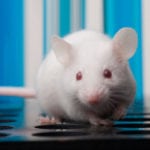 Humans
Humans  Humans
Humans  Animals
Animals 10 Animals That Humiliated and Harmed Historical Leaders
 History
History 10 Most Influential Protests in Modern History
 Creepy
Creepy 10 More Representations of Death from Myth, Legend, and Folktale
 Technology
Technology 10 Scientific Breakthroughs of 2025 That’ll Change Everything
 Our World
Our World 10 Ways Icelandic Culture Makes Other Countries Look Boring
 Misconceptions
Misconceptions 10 Common Misconceptions About the Victorian Era
 Mysteries
Mysteries 10 Strange Unexplained Mysteries of 2025
 Miscellaneous
Miscellaneous 10 of History’s Most Bell-Ringing Finishing Moves
 History
History 10 Great Escapes That Ended Right Back in Captivity
 Humans
Humans 10 Everyday Human Behaviors That Are Actually Survival Instincts
 Animals
Animals 10 Animals That Humiliated and Harmed Historical Leaders
 History
History 10 Most Influential Protests in Modern History
Who's Behind Listverse?

Jamie Frater
Head Editor
Jamie founded Listverse due to an insatiable desire to share fascinating, obscure, and bizarre facts. He has been a guest speaker on numerous national radio and television stations and is a five time published author.
More About Us Creepy
Creepy 10 More Representations of Death from Myth, Legend, and Folktale
 Technology
Technology 10 Scientific Breakthroughs of 2025 That’ll Change Everything
 Our World
Our World 10 Ways Icelandic Culture Makes Other Countries Look Boring
 Misconceptions
Misconceptions 10 Common Misconceptions About the Victorian Era
 Mysteries
Mysteries 10 Strange Unexplained Mysteries of 2025
 Miscellaneous
Miscellaneous 10 of History’s Most Bell-Ringing Finishing Moves
 History
History 10 Great Escapes That Ended Right Back in Captivity
10 Ways Human Contamination Is Destroying Wildlife
As human advancements continue, our impact on wildlife has also risen. Many substances we use daily are harmful to wildlife. While the danger of an oil spill may be obvious, the subtle differences among species and the powers of bioaccumulation or biomagnification mean nasty surprises may be in store when other substances are considered. In cases of mass mortality due to infectious disease, scientists are considering how pollution may be lowering immunity in certain species. We are now discovering that some of the most concerning cases of wildlife loss, environmental change, and disease outbreaks are exacerbated by human activity.
10 The Indian Vulture Crisis
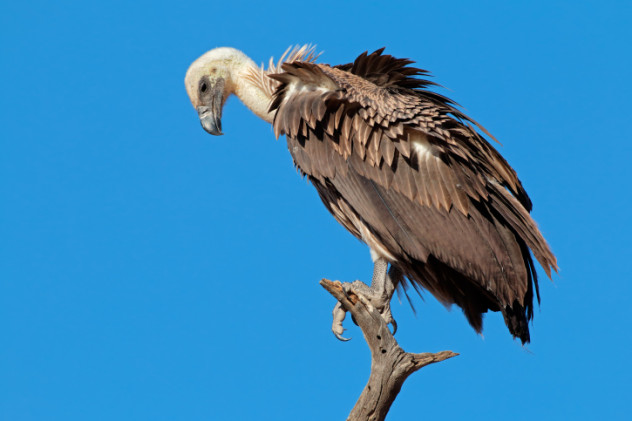
Nature’s most prominent winged scavengers, bare-faced, broad-winged vultures play an essential ecological role in eating decaying meat other species might not touch. Vultures seem tough, but metabolisms differ among species. What works as a veterinary drug in some species has come into the spotlight as a deadly threat to vultures through disastrous population declines on the Indian subcontinent.
Diclofenac is used to treat livestock as a veterinary non-steroidal anti-inflammatory drug. It attacks the vultures’ livers after the birds ingest the carrion of animals treated with the medication, leading to acute renal failure within days. When birds were examined after death, evidence of acute gout was detected in birds with traces of diclofenac in their tissues. Those without the drug did not exhibit any gout symptoms. The chemical has been implicated in the decline of the oriental white-backed vulture, long-billed vulture, and slender-billed vulture.
In 10 years, populations declined by 95 percent in one of the most shocking cases of avian population collapse ever recorded. Following the introduction of diclofenac and the disastrous sweep of mass vulture poisoning across the landscape, all three species were classified as critically endangered by the International Union for Conservation of Nature in 2000. Effects of the decline were many, and traditional Hindu body disposal rituals were interrupted by the lack of vultures, leading to the use of birds from aviaries at great expense.
Efforts to reduce the availability of the drug included a ban, which has staved off declines to a significant degree. Unfortunately, some use continues. Diclofenac can be used on humans, and some human product is being used by farmers, posing a continued threat to vulture survival.
9 The Argentinian Swainson’s Hawk Die-Off

The Swainson’s hawk is a striking raptor with exceptional flying abilities. Spending summers in the North American West, this species embarks on a 10,000-kilometer (6,200 mi) migration from Argentinian wintering grounds in pampas and farmland habitats each year. Many other species of hawk reside in North America year-round, but the Swainson’s hawk relies on insects that thrive in warm weather as a significant portion of its diet. While the young are fed mammals, birds, and reptiles, adult Swainson’s hawks feed primarily on grasshoppers and dragonflies as well as other insects like beetles, moths, and crickets. Unfortunately, it is this dependence on insects that has caused the hawk to be especially vulnerable to the use of pesticides.
As a result of the use of an organophosphate insecticide called monocrotophos, a highly lethal chemical to avian species, 100,000 birds have died. In 1995 and 1996, the mass poisoning of a shocking 6,000 Swainson’s hawks brought this problem to crisis levels. While community education, farmer outreach, and regulatory measures were applied in Argentina after fields were found littered with the dead migrant raptors, the chemical is still used in many places worldwide.
There are long-standing effects that accompany pesticide use. For one, a decline in insect populations associated with pesticides limits food for the hawks, while a decline in hawks could lead to a rise in insect populations.
8 The Bad News About Bees
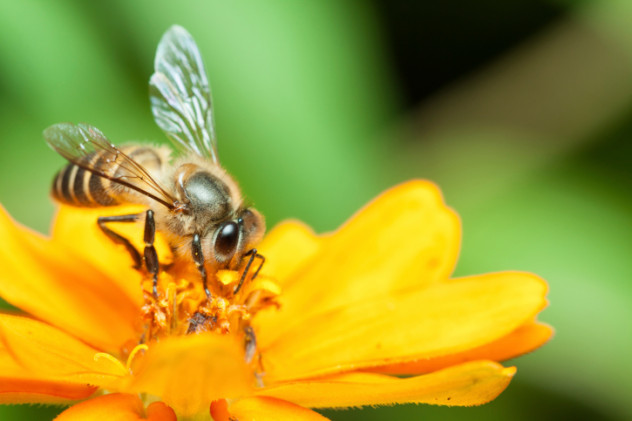
Massive declines in American honeybee populations responsible for pollinating $30 billion worth of crops each year may be traced to parasite infections stemming from decreased immunity, a result of chemical exposure. According to recent research at the University of Maryland and the US Department of Agriculture, exposure to the highly toxic mixes of pesticides, fungicides, and herbicides detected in pollen samples may be responsible.
Scientific investigation has suggested that the concerning chemical and parasitological interconnections could potentially be why large numbers of bees are dying, although the full phenomenon of colony collapse disorder is not yet entirely understood. While scientists aren’t sure why some beehives completely die, contaminated pollen or related effects stand out as suspect factors.
Researchers took pollen out of East Coast beehives responsible for pollinating crops of cranberry, watermelon, and other produce and proceeded to feed the pollen to healthy bees. Soon, the bees experienced a statistically significant reduction in their ability to resist infection by Somea ceranae, a type of parasitic worm. While pesticides cannot be directly linked to colony collapse disorder, the evidence suggests that human activities, parasite susceptibility in bees, and bee population declines may be directly related.
7 Cetaceans And Sound Pollution
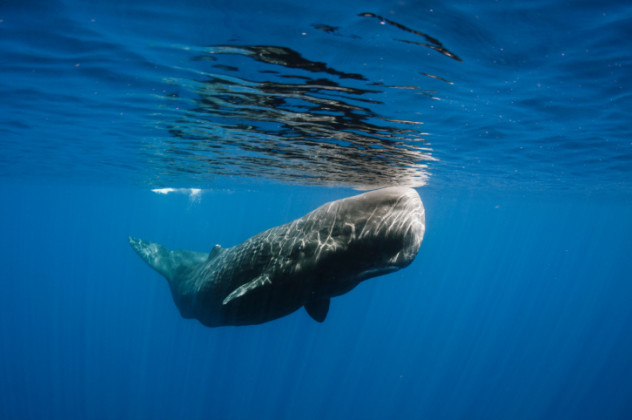
Whales as a group contain the largest, strongest animals on the planet within their ranks, yet a pressing threat comes from their susceptibility to a very different form of pollution: noise pollution. Whales and other cetaceans have complex social structures and communication systems that depend on sonar and their sensitivity to sound. As the ocean becomes subject to a rising din in the form of constant ship traffic, underwater blasting, and pile driving, cetaceans may encounter increasing difficulties in communicating. The International Fund for Animal Welfare notes that whales now expend more energy to produce sound and make themselves heard, let alone straining to hearing other whales.
The range of communication in blue whales, the largest animals on Earth, has decreased in the past century from 1,600 kilometers (1,000 mi) to just 160 kilometers (100 mi). Investigations suggest that mortality in whales can result from extreme noise, especially in the form of naval testing activities. The result may come in the form of mass beachings, but other chronic health impacts (like stress from shipping noises) affect whales, too.
Amid these challenges, the European Union has identified noise as a form of pollution just like oil or mining waste. While there are no international standards for noise pollution levels, research and mitigation efforts are beginning, although actions are likely occurring too slowly for some whales.
6 Cassin’s Auklet Crisis
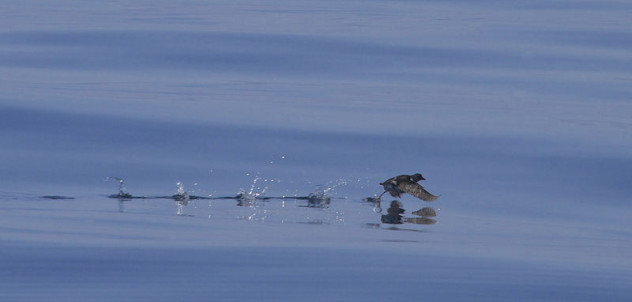
Reasonably easy to find on the West Coast of North America, the Cassin’s auklet is a small grey seabird related to puffins and the extinct great auk. While less distinguished in appearance than such charismatic species, this tiny seabird brings its own distinct interest. Nesting in burrows on island breeding territories, this fish-eating species has baffled scientists and brought great concern to birdwatchers after hundreds washed up dead along the Pacific Coast in fall 2014.
According to University of Washington scientist Julia Parrish of the Coastal Observation and Seabird Survey Team (which has tracked seabird deaths over the last 20 years), the die-off is unprecedented, mysterious, and cause for concern that other species may be affected. Between 50,000 and 100,000 deaths may have occurred in the process of the mass mortality event. Climate change and acidification of the ocean have been considered as potential factors. Dissected carcasses indicated signs of starvation, which could suggest that unusually successful broods combined with inadequate food supplies resulted in the many deaths.
5 The Beluga Biohazard Predicament
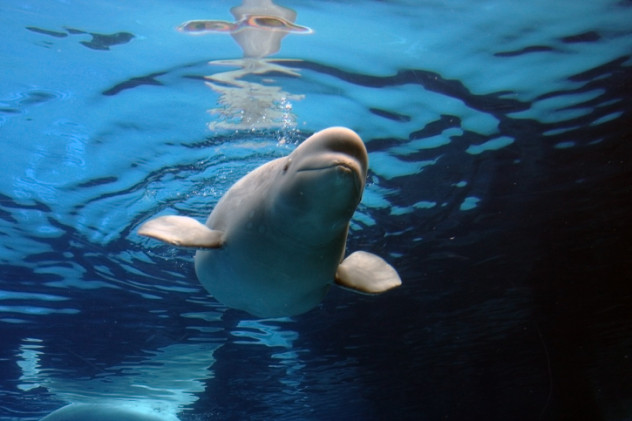
Cheerful yet mysterious, the toothed whale species known as the beluga is one of the most charismatic marine mammals. With their white coloration, smiling expression, and social personality, this species is instantly recognizable. Complex vocalizations have lent this whale the nickname “canary of the sea.” Native to arctic environments, these tiny whales average less than 3 meters (10 ft) long with long, flexible necks. A certain number of belugas live farther south in the St. Lawrence River estuary, where they have existed since the ice age as a rare, non-migratory population.
Unfortunately, the St. Lawrence drains a quarter of North America’s most industrialized area, the shores of the sensitive and increasingly pressured Great Lakes ecosystem. Pollutant levels in beluga flesh, including pesticide residues, heavy metals, and other nasty mixes have reached extremely high levels through both bioaccumulation, a build-up of toxins, and biomagnification, whereby toxin levels in predators like belugas are compounded through the food chain.
This has occurred to the point that beluga carcasses have been classified as hazardous toxic waste by environmental authorities. Located 200 kilometers (125 mi) upstream from the river mouth in Quebec, the whales are able to live farther south due to cold currents that maintain the right feeding and living conditions. Following declines from 5,000 belugas in the area to only 650 since the 1800s, work by veterinary pathologist Daniel Martineau of the University of Montreal notes that the population of beluga whales has exhibited signs of cancer, including neuroendocrine cancers and aggressive, metastatic cancer patterns in this species. It appears that the heavy toxic burden carried by belugas has played a role in the sharp decline of this species. Remediation of habitat, runoff reduction, and pollution mitigation are all worth pursuing in the effort to protect beluga and human health.
4 Seabirds And Oceanic Plastic Pollution
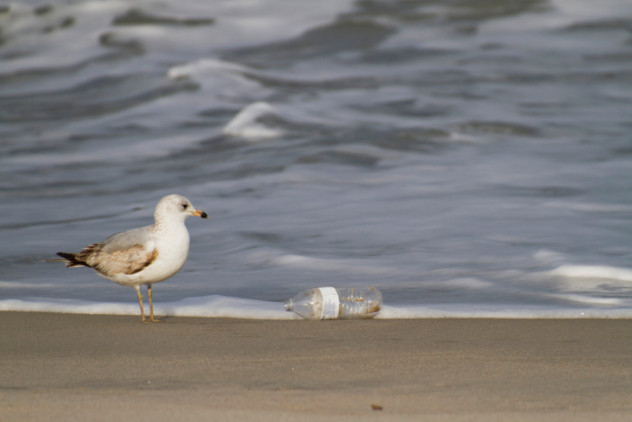
Bird deaths from pollution bring to mind pesticide disasters such as the death of hawks on farmland, but the hazardous waste threatening avians also comes in a less microscopic form. Plastic pollution from multiple sources ends up in the ocean both directly and through wind and runoff. Once in the ocean, certain plastics break into miniscule pellets that are small enough to be consumed by birds. Larger pieces can cause significant physiological distress upon ingestion.
Plastic pellets not only introduce plastic waste into the avian body, but absorb DDT and polychlorinated biphenyls (PCBs) prior to ingestion and become concentrated sources of toxins. Once ingested, the plastics themselves cause acute digestive distress and starvation when they take the physical place of food in the stomachs of chicks. Leachates such as biphenyl from the ingested plastics remaining in a bird’s body system can significantly disrupt hormone systems, leading to illness and even death.
Scientific investigation reveals just how serious this problem is. Necropsies of chicks belonging to the spectacular and declining Laysan albatross showed a terrifying 40 percent mortality rate. Many other seabird species also face threats from simple plastic ingestion as well as the biochemical effects of plastic in the body. Proposed methods of alleviating the problem include chemical decomposition of plastic and efforts to gather the material into floating collection systems. The efforts of one enterprising Dutch student gained over $80,000 in crowdsourced funding and a measure of success.
3 Ocean Acidification And Mollusc Shell Loss
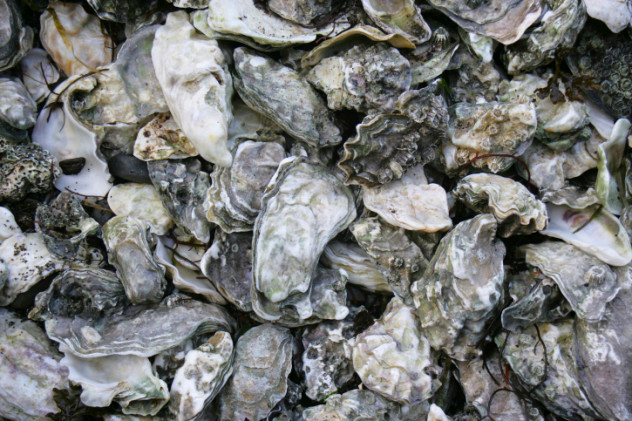
Carbon emissions are now recognized as a potential threat not only to climate stability but also to mollusc populations. The creatures that inhabit the seashells we find washed up on beaches form these protective structures from calcium carbonate, which is a highly alkaline compound that is known as aragonite or calcite to mineralogists, depending on crystal structure. However, increasing levels of carbon dioxide in the atmosphere reduces the pH of the ocean. In what oyster farmers have compared to osteoporosis in humans, ocean acidification directly harms the shell formation and maintenance because the acidity impairs the integrity of the alkaline shell-forming compounds.
Around 79 million tons of carbon dioxide are released into the atmosphere every day through human activity like deforestation, the burning of fossil fuels, and cement production. While the ocean has a pH average of 8.1 at present, that is 0.1 percent more acidic than pre-industrial levels. Unfortunately, significant further acidification can be estimated through projections and modeling as discussed by the European Project on Ocean Acidification.
The response of calcium carbonate–dependent animals to acidification is a much greater wild card. Models suggest that the ocean could reach a pH of 7.8 by the end of the century, a rate of acidification 100 times that of normal pH change. Ocean acidification is occurring, and the potential physiological and biochemical response of animals key to ecosystem stability is cause for concern.
2 Bats And White-Nose Syndrome
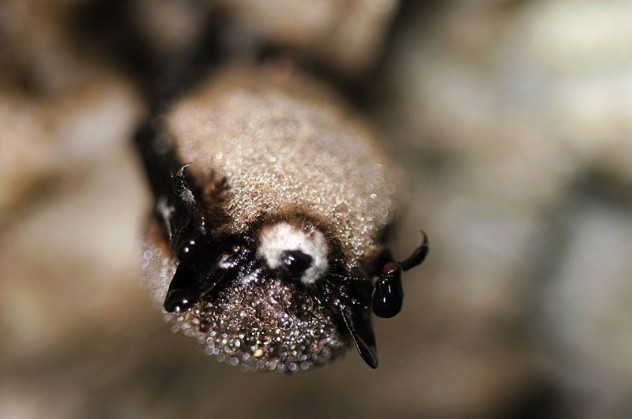
Bats may be a little eery, but winged mammals play a key role in their ecosystems as night hunters of insects. Hibernating in caves throughout the winter, bats have become vulnerable to one of the most catastrophic examples of biological pollution. Originally from Europe, Pseudogymnoascus destructans is a deadly fungus introduced by humans that has now killed millions of bats by interfering with hydration and hibernation. It is commonly referred to as white-nose syndrome. Irritated by the fungus, bats will repeatedly wake up during their hibernation in the cold of winter when food is absent, soon burning through their vital fat reserves.
Venturing out of the caves, the bats die of exposure and starvation. Spreading across multiple provinces and states, white-nose syndrome is transmitted between bats with relative ease, wiping out most or all of affected colonies. Containment efforts have been made, but 80 percent of bats have been wiped out in the Eastern US. Twenty-six US states and five Canadian provinces have been affected.
Bats are key insect consumers in temperate climates. Economic analysis shows insect population control by bats is worth $4–50 billion per year in the United States alone.
1 Animal Hormone Imbalance Epidemics

As pollution impacts our air, land, and water, a growing range of animal species is unfortunately being affected in new and sometimes bizarre ways. Released through industrial processes, organic chemicals such as bisphenol A and PCBs as well as heavy metals attack one of the central control systems of animal behavior—the endocrine system. When hormones go haywire, so do the animals when their sex drive, metabolism, energy levels, and brain functions are compromised or redirected. While the effects of such chemicals on behavior have been known to biologists for many years, more recent findings indicate a greater effect on gender in animals through interference with the sex organs.
Most recently, two scientific reviews indicate that endocrine disruptors at low levels are having much more pervasive effects on behavior than previously imagined. Social and individual structures and norms are being disrupted at the expense of survival and reproduction as chemicals cause hormonal imbalances. Frogs have been exhibiting mutations, intersex conditions, and unusual mating behavior due to pharmaceutical pollution, a result of the increasing use of medications designed to influence human hormone levels, like birth control. In many cases, water treatment centers are not set up to filter these chemicals from waste, driving extensive investigation into this emerging problem.
Christopher Stephens is an environmental consultant, wildlife interpreter, and writer based in British Columbia, Canada. He completed his M.Sc. in Environment and Management and writes about health, wildlife, and business. Feel free to contact with research or writing inquiries through cmswritingconsulting.com.
An experienced naturalist, Christopher also leads world-class bird-watching tours for Pacific Rainforest Adventure Tours in B.C.




